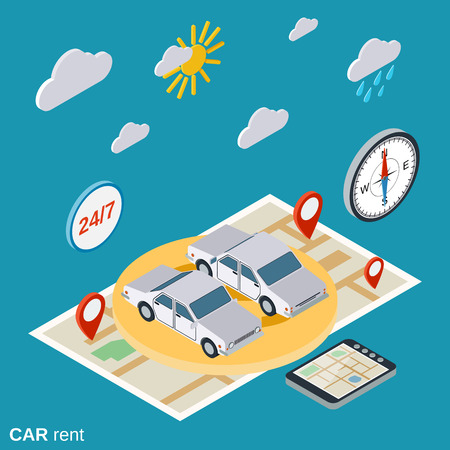Introduction to Master Cylinders
When it comes to your vehicle’s braking system, the master cylinder is one of the most crucial components working behind the scenes. This device acts as the heart of your car’s brake system, converting the force you apply to the brake pedal into hydraulic pressure that activates your brakes. Without a properly functioning master cylinder, your ability to stop safely can be seriously compromised. Understanding what a master cylinder is, its essential role in distributing braking force, and why it’s so important for overall vehicle safety is key for every driver. In this article, we’ll break down how master cylinders work and explain when it might be time to consider a replacement.
2. How Master Cylinders Work
The master cylinder is a key component in your vehicles braking system, acting as the heart that translates your foot pressure on the brake pedal into stopping power. When you press down on the brake pedal, a pushrod connected to the pedal moves into the master cylinder, which is filled with brake fluid. This movement forces a piston (or pistons, in dual-circuit systems) inside the cylinder to compress the fluid, generating hydraulic pressure that travels through brake lines to each wheel.
Internal Mechanism of Master Cylinders
Understanding what happens inside a master cylinder helps explain its crucial role. Inside the housing, youll typically find one or two pistons, springs, and rubber seals. When you press the pedal:
- The piston(s) move forward, pushing brake fluid through dedicated passages.
- This hydraulic force is evenly distributed to all four brakes (in most modern vehicles).
- Springs return the pistons to their original position when you release the pedal, allowing new fluid to enter from the reservoir and keeping the system ready for the next use.
Hydraulic Force Conversion Table
| Action | Component Involved | Result |
|---|---|---|
| Pressing brake pedal | Pedal & Pushrod | Piston movement begins |
| Piston compresses fluid | Piston & Brake Fluid | Hydraulic pressure created |
| Pressure travels to wheels | Brake Lines | Brakes engage at each wheel |
Dual-Circuit Design for Safety
Most American cars use a dual-circuit master cylinder for added safety. This setup splits the braking system into two independent circuits—typically front/rear or diagonal pairs—so if one circuit fails, you still have some braking ability. This redundancy is a vital feature for safety-conscious drivers and meets strict U.S. auto safety standards.

3. Types of Master Cylinders
When it comes to American vehicles, the master cylinder isnt a one-size-fits-all component. In fact, there are two main types youll encounter under the hood: single circuit and dual circuit master cylinders. Understanding these designs is key to recognizing how your braking system functions and knowing what to look for if problems arise.
Single Circuit Master Cylinders
Older American cars, especially classics from the 1950s and 1960s, often used a single circuit master cylinder. This design uses one piston and reservoir to control hydraulic pressure for all four brakes. While straightforward and easy to service, the major drawback is that if a leak develops anywhere in the system, you could lose all braking ability—a serious safety concern by todays standards.
Dual Circuit Master Cylinders
Modern vehicles almost exclusively use dual circuit (or tandem) master cylinders. These feature two separate hydraulic circuits—usually one for the front brakes and one for the rear. This means if one circuit fails due to a leak or component failure, the other can still provide some stopping power. Dual circuit designs became standard in American cars after federal safety regulations were updated in the late 1960s, making them essential for everyday driving safety.
Which Type Does Your Vehicle Have?
If youre driving anything built after 1967 in the U.S., odds are your car has a dual circuit master cylinder. You can usually tell by looking at the brake fluid reservoir: dual circuits have two separate chambers, while single circuits have only one. Knowing which type you have will help when it comes time for maintenance or troubleshooting brake issues.
Choosing the Right Replacement
If you need to replace your master cylinder, always check your owners manual or consult with a trusted mechanic to make sure youre getting the correct type for your vehicles make, model, and year. Using the wrong design can compromise braking performance and safety. With this knowledge in hand, youre better equipped to understand whats happening beneath your hood and keep your ride safe on American roads.
4. Signs Your Master Cylinder Is Failing
The master cylinder is a crucial component of your car or truck’s braking system, and when it starts to fail, it can put your safety at risk. Recognizing the early warning signs can help you address problems before they lead to brake failure. Here are some common symptoms that may indicate a faulty or worn-out master cylinder:
| Symptom | Description |
|---|---|
| Spongy or Soft Brake Pedal | If your brake pedal feels unusually soft or sinks to the floor when you apply pressure, air or moisture could be leaking into the master cylinder or brake lines. |
| Brake Warning Light | The brake warning light on your dashboard may illuminate if there’s a loss of pressure in the braking system, often caused by internal leaks in the master cylinder. |
| Contaminated Brake Fluid | Dirty or dark brake fluid might indicate internal wear or seal breakdown within the master cylinder, allowing contaminants into the system. |
| Poor Braking Performance | If your vehicle takes longer to stop or requires more effort to slow down, it could be due to failing seals or internal damage inside the master cylinder. |
| Visible Fluid Leaks | You may notice brake fluid leaking near the firewall where the master cylinder is mounted. This is a clear sign that replacement is needed. |
If you experience any of these symptoms while driving, it’s essential to have your braking system inspected by a qualified mechanic right away. Ignoring these signs can lead to total brake failure and increase your risk of an accident. Keeping an eye out for these issues ensures your car or truck remains safe and reliable on American roads.
5. When and How to Replace a Master Cylinder
Knowing when to replace your master cylinder is crucial for maintaining safe and reliable braking performance. The most common signs that it’s time for a replacement include a spongy or sinking brake pedal, visible leaks around the master cylinder, or a persistent brake warning light on your dashboard. If you notice any of these symptoms, it’s important to act quickly to avoid compromised braking ability.
Diagnosing the Problem
Start by checking the brake fluid level and inspecting for leaks near the master cylinder and under the car. Look for discolored or contaminated brake fluid, which can also indicate internal seal failure. Pump the brakes with the engine off; if the pedal slowly sinks to the floor, you likely have a failing master cylinder.
When to DIY
If you’re comfortable working on cars and have basic mechanical skills, replacing a master cylinder can be a manageable DIY project with the right tools and safety precautions. Make sure to consult your vehicle’s service manual, use quality replacement parts, and always bleed the brakes properly after installation to remove air from the system. However, remember that improper installation can lead to dangerous brake failure.
When to See a Mechanic
If you’re unsure about diagnosing brake issues or lack experience with hydraulic systems, it’s best to leave this job to a professional mechanic. Modern vehicles often have complex brake systems requiring specialized knowledge and equipment. A certified technician will ensure everything is installed correctly and safely, giving you peace of mind on the road.
6. Maintenance Tips for Longevity
Keeping your master cylinder and overall brake system in top shape is crucial for safe driving and extending the lifespan of your vehicle’s components. Here are some straightforward maintenance strategies to help ensure your master cylinder performs optimally for years to come.
Regular Brake Fluid Checks
One of the simplest ways to maintain your master cylinder is by checking the brake fluid level and quality regularly. Low or dirty fluid can cause internal corrosion and reduce braking efficiency. Always use the brake fluid type recommended in your owner’s manual, and make it a habit to inspect for discoloration or debris.
Inspect for Leaks
A healthy master cylinder should never leak. Periodically check around the master cylinder, brake lines, and under your vehicle for any signs of fluid leaks. Catching leaks early can prevent bigger issues down the road, such as total brake failure.
Flush Your Brake System
Over time, brake fluid absorbs moisture, which can corrode internal components and lower performance. Most American car manufacturers recommend flushing your brake system every two to three years, but always refer to your owner’s manual for specific intervals.
Listen and Feel for Changes
If you notice spongy brakes, longer stopping distances, or a change in pedal feel, don’t ignore it. These symptoms could indicate an issue with your master cylinder or other parts of your brake system. Address any unusual changes promptly to avoid costly repairs or unsafe driving conditions.
Stay on Top of Routine Inspections
Incorporate regular brake checks into your vehicle’s maintenance schedule—especially before long road trips or after heavy use like towing or mountain driving. Early detection of wear or damage keeps you safer on the road and saves money in the long run.
By following these simple maintenance tips, you can help ensure that your master cylinder—and your entire braking system—remains reliable, keeping you and your passengers safe mile after mile.


